Between network issues, server maintenance, and user support, maintaining a web application can get super complicated. But there are only so many hours in a day.
APM is a system that provides unified monitoring, tracking, and analytics for both the frontend and backend of an application. All of this information makes it much easier to diagnose and correct problems, in order to provide the best possible user experience.
In this article, we’ll explain exactly what an APM tool is and why you should be using one.
Then we’ll take a look at the best solutions on the market today, including several open source options. We have a lot of ground to cover, so let’s dive right in!
Introduction to APM and APM Tools
APM stands for Application Performance Management. It’s also sometimes referred to as Application Performance Monitoring, especially in recent years.
Although the phrases are often used interchangeably, there is a slight technical difference between management and monitoring. Management implies a more active role than monitoring, which typically means automated, regular scanning of web apps.
So, what is APM? In short, it involves monitoring speed from both a user-facing and a backend perspective to find potential issues and performance bottlenecks in web applications.
The data is then used to diagnose, troubleshoot, and resolve issues in order to improve the user experience. APM tools are the software suites used to gather and analyze all of that data.
The Key Elements of APM
The APM industry is a pretty broad one and lots of companies offer tools that could technically be called APMs. The phrase has become ambiguous enough that research firm Gartner created a list of criteria that software should meet to qualify for the term.
The original definition included five key elements:
- End-user experience monitoring
- Application runtime architecture discovery and modeling
- User-defined transaction profiling
- Application component monitoring
- Reporting and application data analytics
However, that’s a fairly technical definition, and the landscape is constantly changing. So a few years later Gartner revised its guidelines, and pared the list down to just three essentials:
- Digital experience monitoring
- Application discovery, tracing, and diagnostics
- Purpose-built Artificial Intelligence (AI) for IT operations
The revised list is much easier to understand in a practical sense.
Digital experience monitoring refers to the experience your users are having with your application. Are they happy with how everything works? Are they having trouble, or running into bugs and glitches? An APM tool should help you discover these issues.
Application discovery, tracing, and diagnostics is exactly what it sounds like: digging into the details of your software to discover and diagnose potential problems.
Finally, artificial intelligence is commonly used to support the automation of these processes.
These are the core elements you’ll want to look for when considering any APM solution.
Why You Should Be Using an APM Tool
An APM tool provides a single platform where you can monitor and manage all of your software and applications. This consolidation alone can be a huge boost to efficiency and productivity.
The unified dashboard of most APM tools provides a one-stop-shop for PHP performance monitoring, managing updates, watching for conflicts, and correcting errors. This enables developers and IT teams to provide the best user experience possible for their customers.
Other benefits of an APM include:
- Faster development cycles
- A better understanding of which features clients actually use
- Increased confidence when deploying new software
In other words, APM doesn’t just benefit you, but your customers as well. It’s a win-win scenario for all parties.
3 Examples of APM in Action
If you’re wondering how all this translates to real-world business use, here are three examples of organizations implementing APM to great effect:
- Cornell University found itself in a bit of a bind: a mission-critical software platform used by the university was crashing several times a week due to complex transactions. By leveraging APM tools, Cornell was able to more easily find the bottlenecks and drastically reduce turnaround times on user complaints.
- Alaska Airlines deployed APM to help optimize its complex cloud-based systems and maintain customer satisfaction. APM tools helped the company reduce critical outages and other issues by 60%, and catch problems before they had a chance to impact the user experience.
- Here at Kinsta, we the Kinsta APM tool to monitor and optimize client websites to ensure maximum performance and satisfaction. This enables us to easily drill down to the lowest levels of a WordPress site, and pinpoint plugins, themes, and coding errors that are causing problems.
APM tools can be used in a wide range of scenarios to achieve many and diverse goals. Whatever your business might do, it’s likely you can put APM to work for you.
How APM Benefits WordPress Users
APM tools can be leveraged by uses of all platforms.
WordPress site owners in particular benefit from using them to monitor and maximize performance. You can keep tabs on plugins, themes, database calls, and other transactions on your site to find bottlenecks.
This enables you to quickly fix problems and maintain an excellent user experience on your site. You can use APM tools to debug slow-loading pages and check for unnecessary processes that could be causing high overhead and server strain.
Most APMs will work with WordPress installations, but some offer features more specifically tailored to particular platforms.
We’ll touch on those in our list below.
How To Choose an APM Tool
Here are a few features that should be included in any APM tool you consider:
- In-depth monitoring of business transactions, infrastructure, user experience, and network performance.
- Solid reporting and analytics from a single dashboard.
- The ability to dive deep into the data.
Beyond that, price will obviously be a consideration. Some of these tools, particularly those meant for enterprise use, can be expensive. However, when looking at price, make sure to factor in the savings you’ll accrue from increased productivity and reduced downtime.
Kinsta’s Free APM Tool
Before we dive into the best APM tools that you can use on any platform, we want to take a moment to tell you about Kinsta’s free APM tool. All of our customers, regardless of plan tier, have access to Kinsta APM, a free tool that lets you diagnose performance bottlenecks on your WordPress site.
Kinsta APM provides you with insights on slow PHP transactions, MySQL queries, external requests, and more. Kinsta APM was built specifically for monitoring WordPress sites, so you can use it to quickly identify problematic plugins and themes.
Check out the video below to learn more about how to use the Kinsta APM tool to troubleshoot performance issues on your site.
The 8 Best APM Tools
With the preliminaries out of the way, here are our picks for the best APM tools on the market. There are options here for everyone, from small businesses and developer teams all the way up to full-scale enterprises.
We’ve included five premium tools along with three free and open source options, so every budget is covered as well.
| Starting Price | Free Trial | Standout Feature | Who It’s For | |
| Datadog | $31/month | 14 days | Clear visualization of performance data | Small business |
| Loupe | $50/month | 30 days | Powerful web client | Enterprise and IT specialists |
| AppDynamics | By request | 15 days | Business insights based on data | Enterprise |
| Stackify Retrace | $79/month | 14 days | App scores for quickly gauging performance | Software developers |
| New Relic | $99/month | Limited free plan | Powerful WordPress-specific monitoring | WordPress-based businesses |
| Stagemonitor | Free | N/A | Browser widget for monitoring during the development process | Java-based developers |
| Scouter | Free | N/A | FOSS alternative to AppDynamics | Small business |
| Pinpoint | Free | N/A | Broad data overview, down to code-level transaction visibility | Enterprise |
Let’s take a closer look at each APM tool now.
1. Datadog
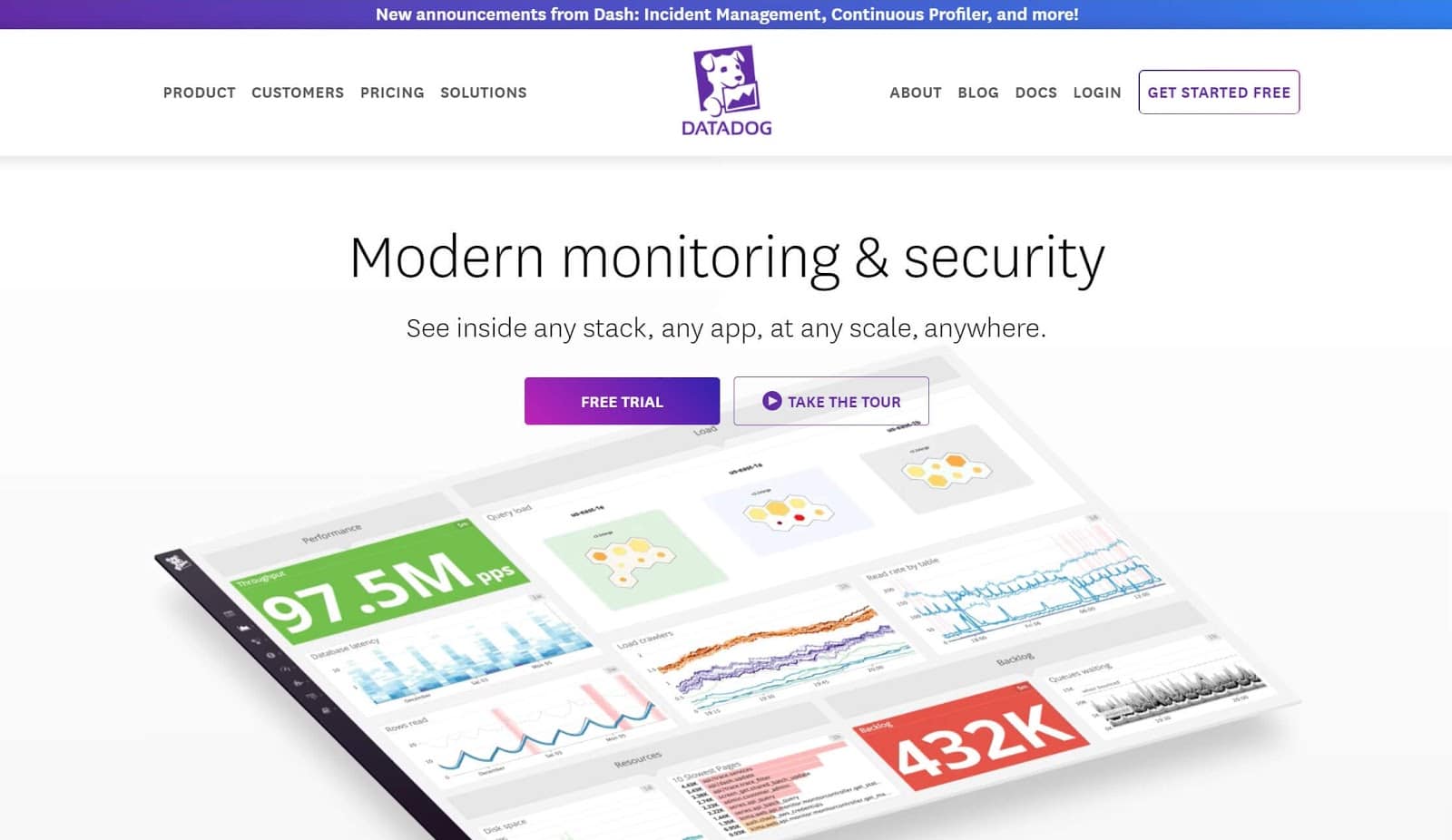
Datadog offers full-stack visibility into your applications, servers, and cloud-based platforms. It works across a wide range of products, using a built-in integration system to make connecting easy.
Datadog features powerful user experience monitoring, enabling you to keep an eye on network timing, transactions, and more. It also provides notifications of problems across the entire software stack.
The best part of Datadog is how clearly it visualizes performance. The customizable dashboard enables you to build a personal monitoring system that gives you visibility into what you need when you need it.
Pricing for Datadog starts at $31/month per host. There are a variety of plans and add-ons available, so you can ensure that you get the features you need. There’s also a 14-day free trial available. Its reasonable pricing and ease of use makes this a solid APM for businesses of all sizes.
2. Loupe
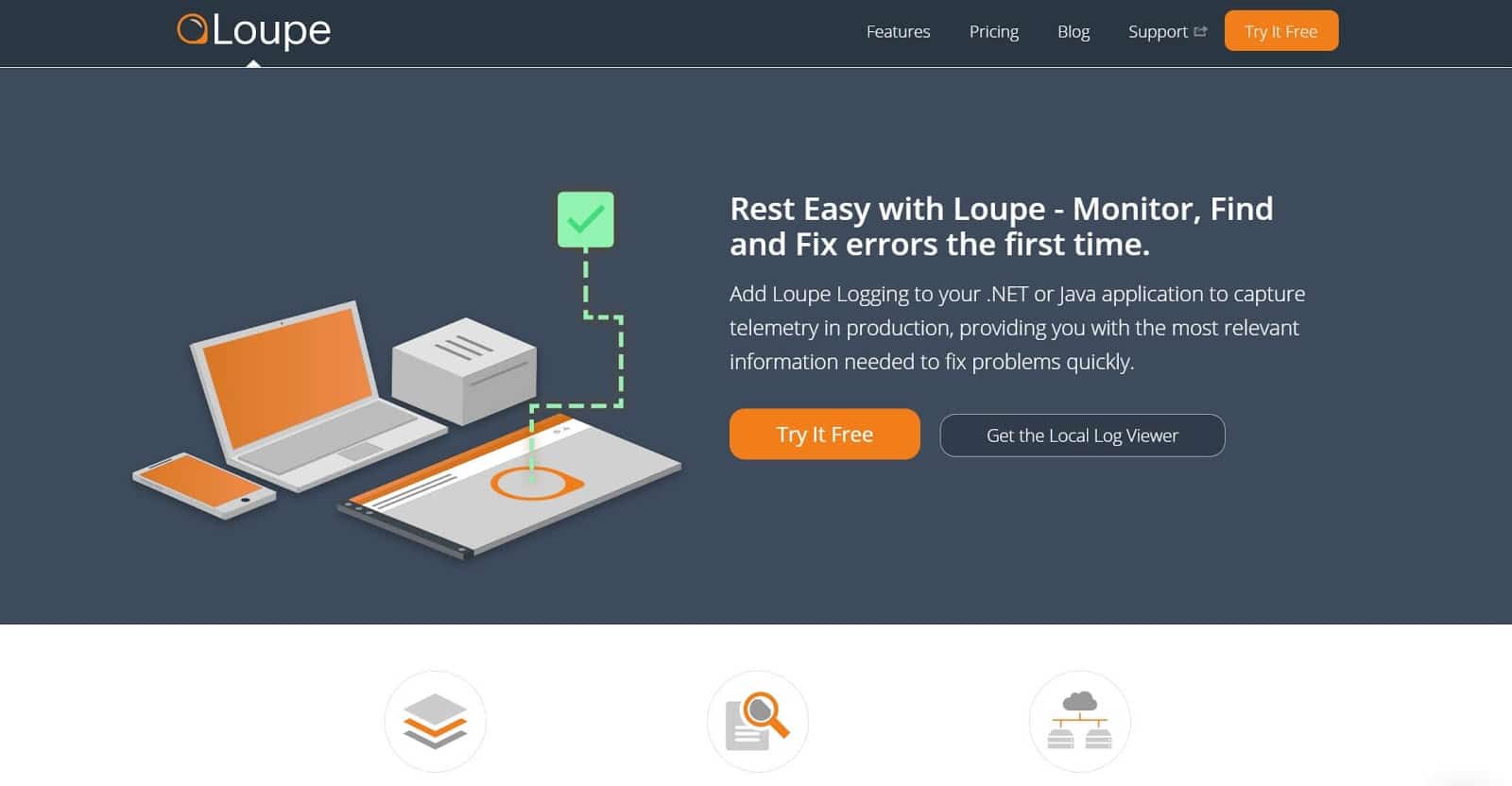
Loupe is designed primarily for enterprise customers and IT specialists, although its ease-of-use and fast setup make it a decent option for small businesses as well.
While it doesn’t cover quite as many applications as some other APM tools, Loupe offers all the basics you’d expect from an APM suite. What’s more, it does stand out from the rest with some unique features.
One of the most useful options is automatic grouping of your log events, so you don’t have to waste time digging for the source of an issue. There’s also an excellent web client, so you can pull up your information from any computer or device.
Loupe starts at $50 per month for the Basic Plan, with enterprise solutions starting at $500 per month. There’s also a 30-day free trial available, so you can take the software for a spin before committing.
3. AppDynamics
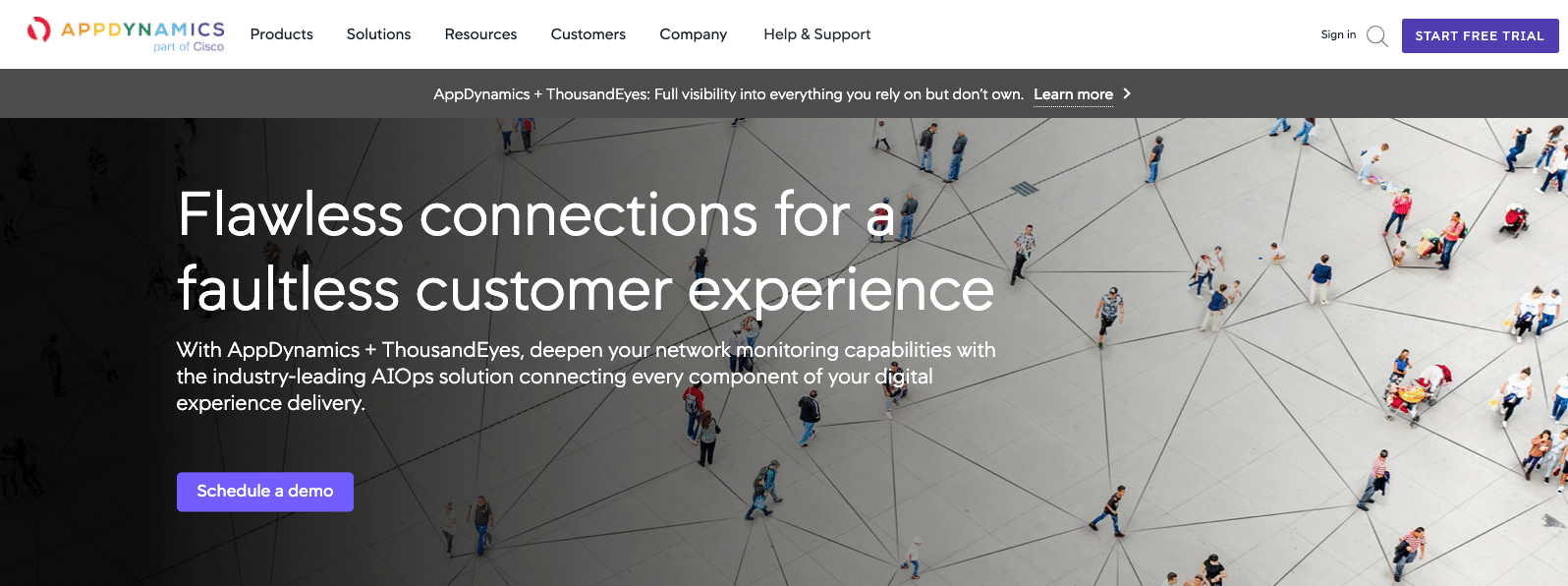
The standout features of AppDynamics are the extremely high visibility offered, even in complex environments, and its AI-powered system for catching performance problems and bottlenecks and quickly correcting them.
Apart from that, AppDynamics offers the usual features of an APM suite: application, infrastructure, and end-user monitoring. It can also provide business insights and recommendations by translating performance data into business outcomes.
What’s more, this solution is backed by the software giant Cisco. So you don’t have to worry about unreliable support or a lack of updates.
AppDynamics offers a 15-day free trial. After that, pricing is available upon request. It can be quite expensive (in the thousands-of-dollars-per-year range), so it’s probably best suited for enterprises and medium-to-large sized businesses.
4. Stackify Retrace

Stackify Retrace is an APM tool designed specifically for developers. It monitors for bugs and bottlenecks, and then sends alerts to your channel of choice such as SMS or Slack.
This tool is designed to be easy to deploy. For that reason, it’s a Software-as-a-Service (SaaS) solution that’s easy to scale.
It also pulls all of your logs into a single centralized location, making them easier to review. Probably the best feature on offer is the app’s performance score, which lets you get a quick picture of how your app is running.
Stackify Retrace comes with a 14-day free trial. After that, pricing starts at $79 per month.
5. New Relic

New Relic is a powerful APM tool that bills itself as an “observability platform”. It lives up to that promise: one of its strongest features is the extremely clear visualization it offers of your entire software stack.
Another area where New Relic stands out is its unique WordPress-specific functionality. When you set up New Relic on a WordPress site, it opens up several new monitoring features that let you easily keep tabs on WordPress hooks, plugins, and themes.
New Relic offers a lifetime-free plan (albeit with some limitations), as well as several premium tiers starting at $99 per month. In addition to our built-in free APM tool, Kinsta sites also support New Relic (license required) for application performance monitoring.
6. Stagemonitor
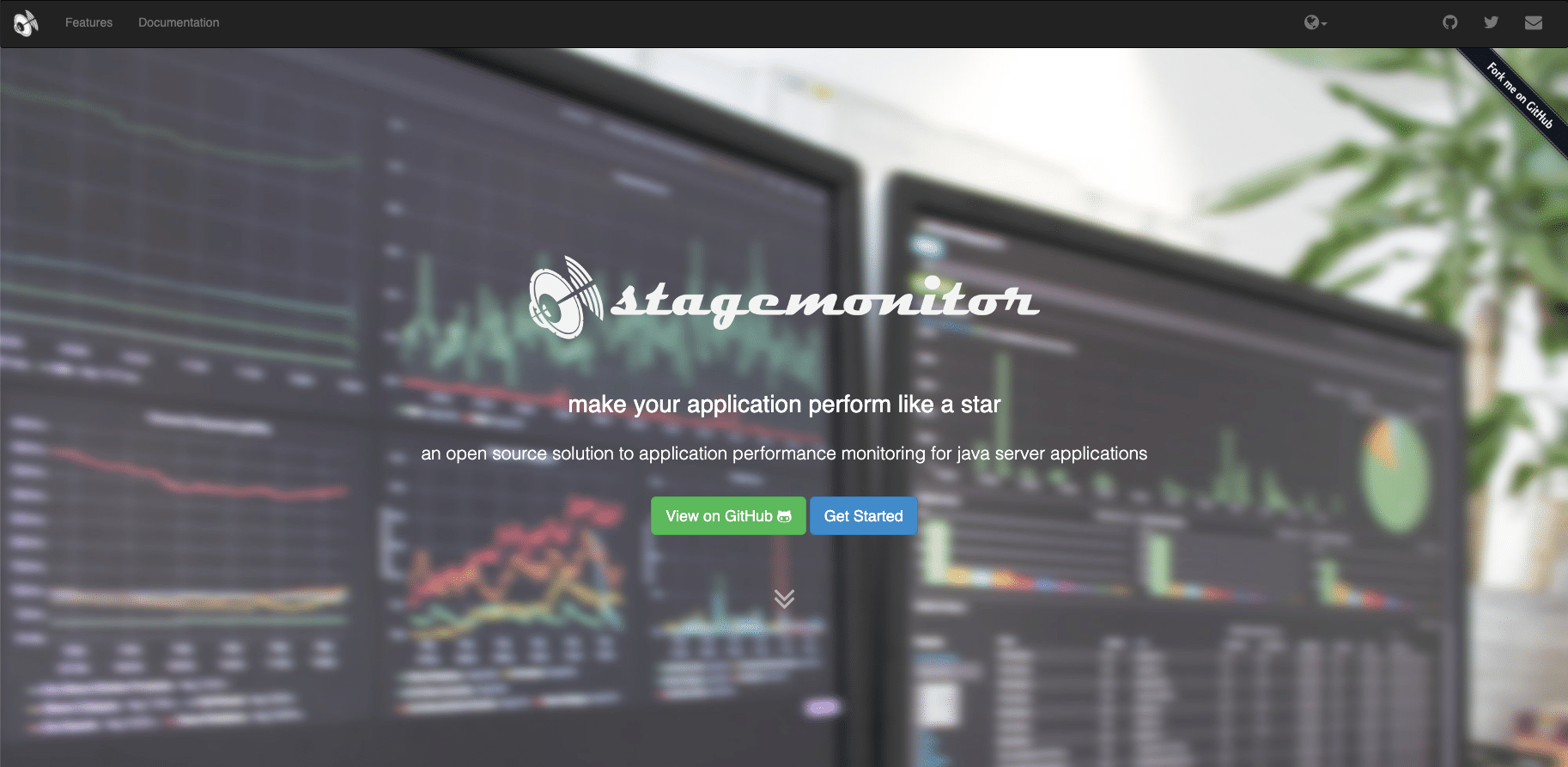
Stagemonitor is a Java-specific APM that’s designed primarily for web applications. That makes it somewhat more limited than the other solutions on this list. If you work primarily with Java-based apps, Stagemonitor might just be the ticket.
This tool’s standout feature is definitely the browser widget that enables you to monitor and gather analytics while you’re developing the application. This unique ability makes it easy to review your code while you’re working, making Stagemonitor ideal for web developers.
Best of all, Stagemonitor is Free and Open Source Software (FOSS). In other words, it won’t cost you a thing to use.
7. Scouter
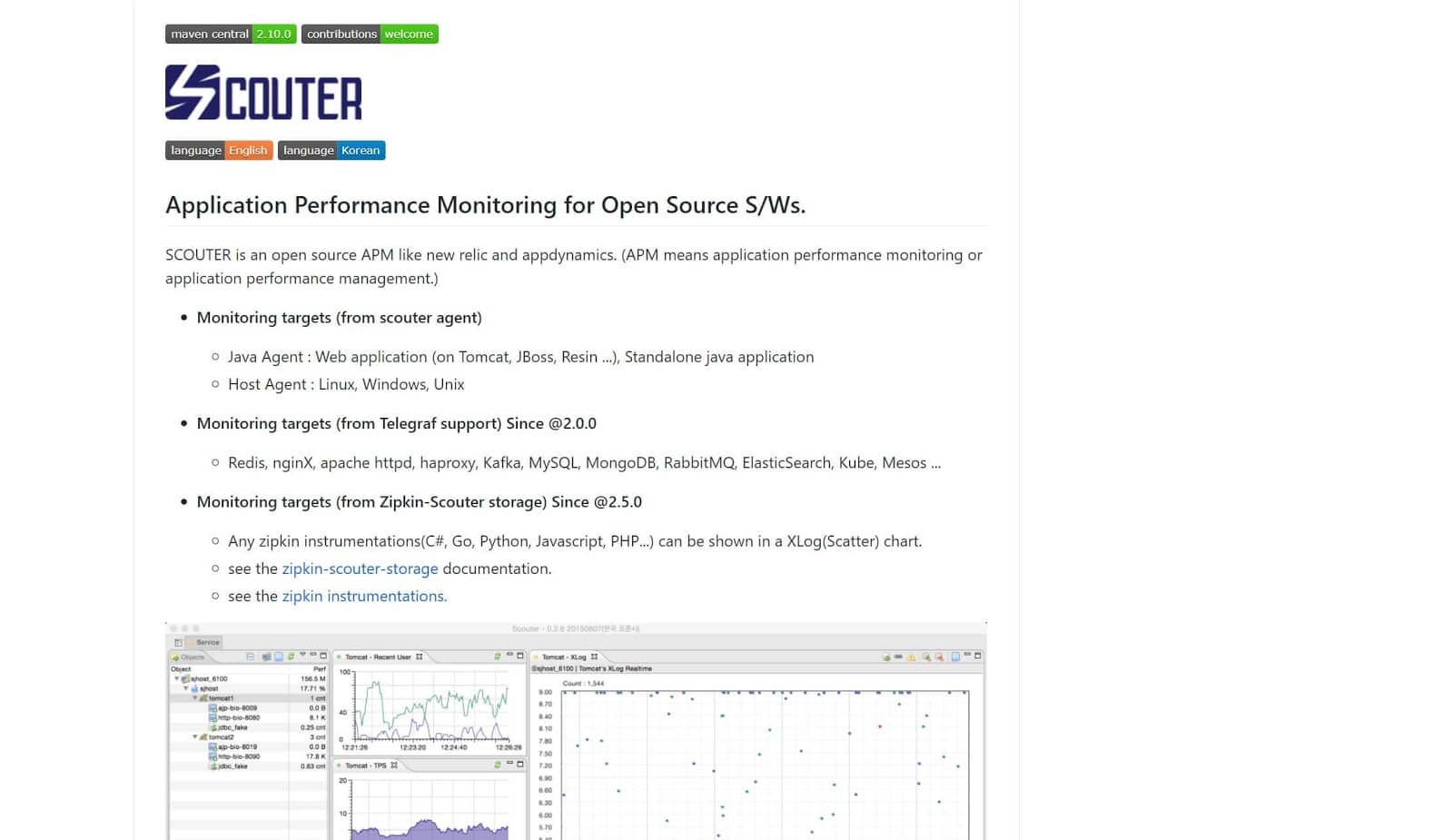
Scouter bills itself as a FOSS alternative to AppDynamics. We’re not sure it quite lives up to that hype, but it’s still a solid and well-rated APM tool that won’t cost you a dime to use (while AppDynamics doesn’t even list a price on its website).
Scouter can monitor Java-based apps, both web-based and native. It’s also able to monitor the most popular web server database platforms, including Nginx, Apache, MySQL, Redis, and MongoDB.
This isn’t the prettiest software we’ve ever seen, but it covers all the basics of an APM tool, including user activity, resource metrics, and response time. Scouter is a FOSS APM solution, so there’s no cost to use it.
8. Pinpoint
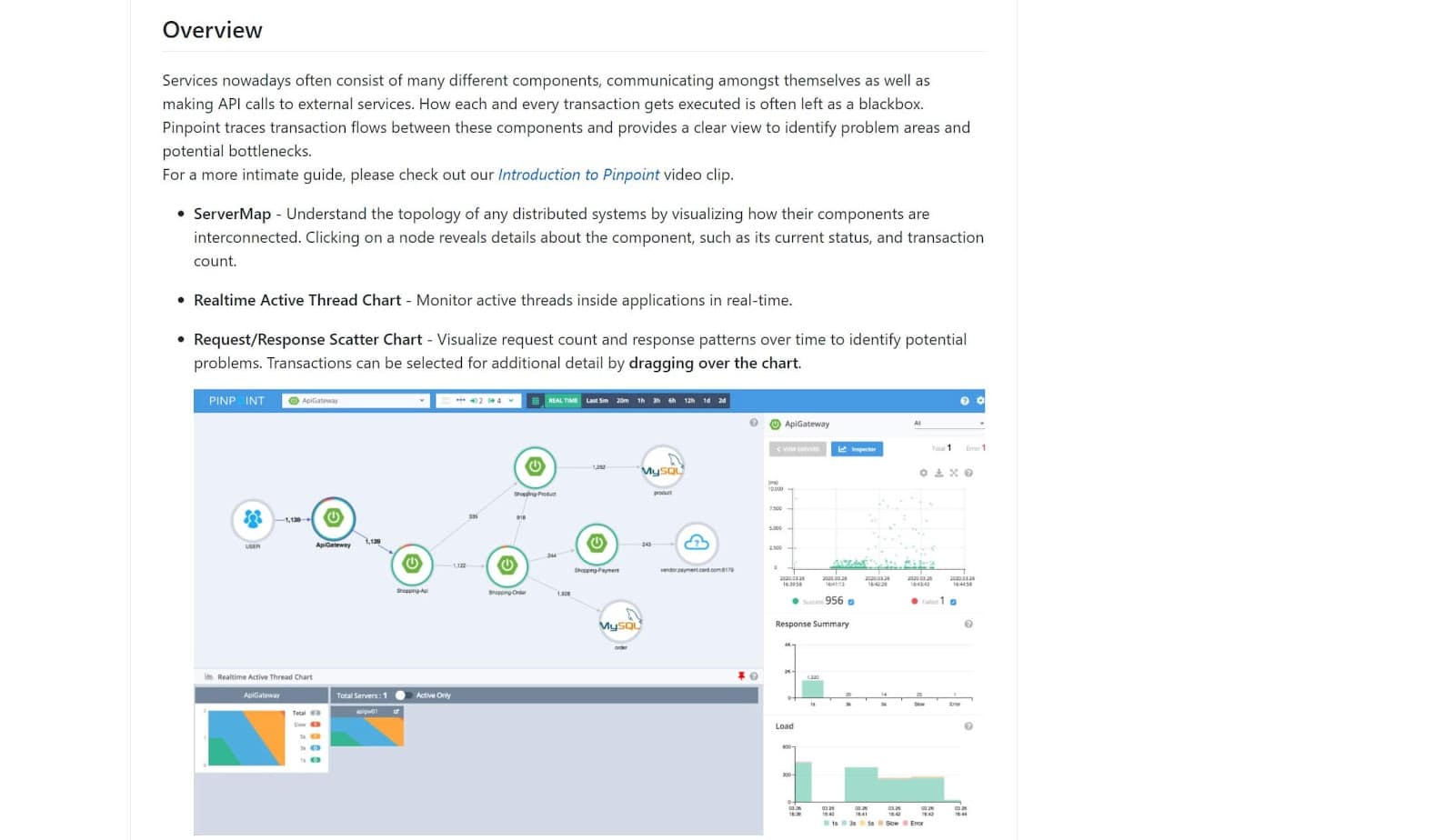
Pinpoint is one of the most popular open source APM tools. Aimed at enterprise users, Pinpoint is designed to monitor large-scale Java and PHP distributed systems.
The primary strength of this solution is the powerful overview it provides, showing how all the parts of your application stack integrate and work together. Pinpoint also boasts code-level transaction visibility, and the ability to set up monitoring without altering the code.
Since Pinpoint is a free software option, it won’t cost you a dime to try it out.
Summary
Whether you’re trying to streamline your IT budget, ease the burden on your support team, or just provide the best possible user experience, APM tools can help.
This is a competitive space and choosing the right solution for the job can be tough.
If you look for an APM tool that provides these basics, however, you should be off to a strong start:
- Comprehensive monitoring for user experience, business transactions, infrastructure, and response times.
- The ability to dive deep into that data.
- A robust dashboard for tracking analytics and reports.
Do you have any questions about application performance management? Let us know in the comments section below!



Leave a Reply